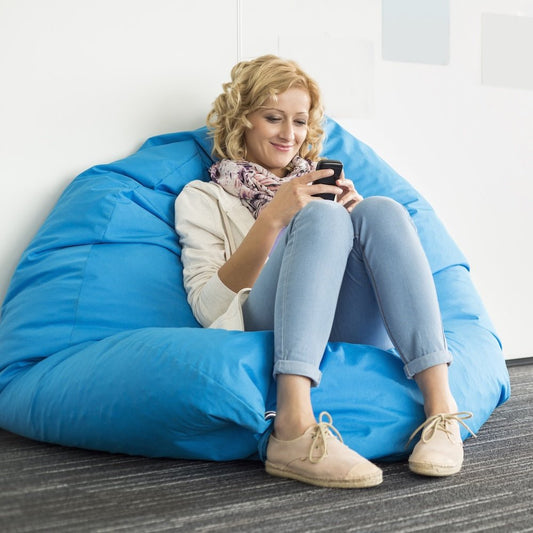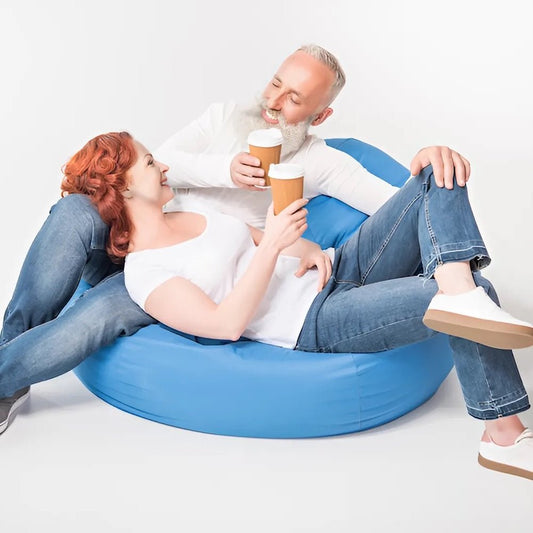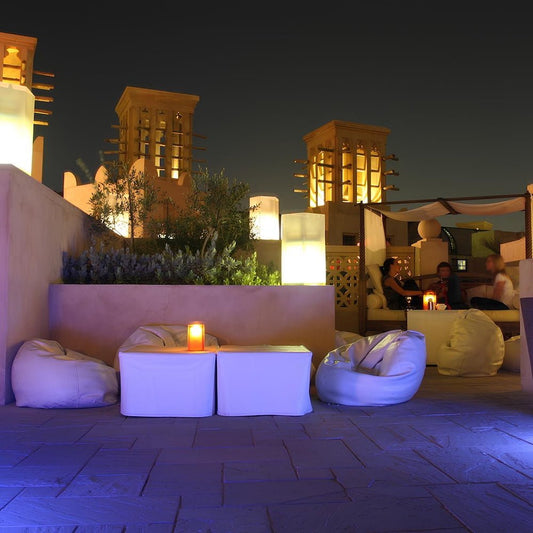Did you know that the color spectrum is used in radiation therapy? This is known as chromotherapy and is based on centuries of research with the visible spectrum and its impact on us. Colors have been tied to effects on our emotional and mental states in countless studies. Different room colors are the basis of various psychological designs to affect our mood. While we may have own color preferences, it is in your best interest to understand how different colors work. For example, do you want your favorite color "red" to enhance your energy levels in the bathroom? For some, maybe, but for others, they probably would rather have relaxing tones. The beauty of your home goes beyond themes and styles; it's how you interact with it. Mastering the power of color takes patience and planning, but it can pay off big in the life of your home. Follow this guide on the relationship between room colors and moods.
Basics of Different Room Colors
The brain is making unconscious subconscious decisions every millisecond. Through recognition of behavior patterns, scientists have been able to assign psychological values to colors. These values are tied to emotional responses, decision-making, and judgments. It is said that, subconsciously, people decide on products within 90 seconds of seeing it. Color has a huge impact on these quick decisions. If you intend on selling your home, think about how color can influence buyers. Think about how to add color to your next renovation and consider using furniture, rugs, tiles, and chairs for inexpensive solutions. Ideally, you want to have three to four main colors in a room at most. Get to know your primary and secondary colors; this will enhance your ability to control the mood of a room.
Every Category of Colors Explained
We'll divide the different room colors into three categories: neutral, active, and passive. As long as you remember these three categories, you can mix until your heart's content. You'll find that primary and secondary colors work together to offer balance in these color themes. Another thing to remember is that the darker shade of a color, the more subtle the impact. Think of a purple bean bag! Brighter shades will make rooms feel bigger and more energetic. We'll touch on these elements while going over each color.
Reds
The color red is pure energy, adrenaline, and passion. You'll find a lot of use for red in the living room, hallway, and most kitchens. Use of red has to be strategic; it can easily overwhelm a room's energy. For example, red can go great in a bedroom but stick to accents and darker shades. This touch of red can make you feel passionate, awake, but only in the appropriate times. Too much red can make you feel restless, frustrated, and stressed. The color red will raise the body's temperature, blood pressure, and sense of awareness. This is why it is so effective as a warning sign or for directions.
Yellows
Bright sunshine hues of yellow will open up any space. Yellow is associated with happiness, playfulness, and health. Yellow is also used as a color to attract attention. You can use yellow accents to break up patterns and keep a room from feeling stagnant. Yellow works best in bathrooms and kitchens. It will require more work to keep looking clean, but that means better sanitation. It is also worth considering that yellow may seem unnerving as the dominant room color. Babies cry more and people can get nervous in all-yellow rooms.
Blues
The universal color pallette associated with calm and serenity. Facebook and other big tech companies choose blue to become more personable with people. It's a color associated with feelings of safety and security. Blue is the opposite of red in ways it affects rooms. It fits well with children's rooms, dining rooms, and bathrooms. Bright blue shades can elicit a unique feeling of joy and safety at the same time. All shades of blue work well in naturally lit spaces, such as the kitchen or living room. Mixing blues with neutral colors will enhance its calming effect. Mixing blues with darker colors will bring the mood of the room too low, so take care. Blues also work great for ceiling colors and accent furniture. This can help balance a room filled with more energetic colors. Blue is often used as a softener for rooms with industrial or modern themes.
Greens
The color of money, the sign to go, and a safe color to put into any room. Green covers a wide spectrum of uses, especially when mixed with secondary colors. Green is a great color to pair with blue to create a calming effect. You can also use bright greens to pair with yellow or red to create a flow of energy. Green is used for directions and pathways, so it works best in entrances, exits, and hallways. Because green isn't a dominating color, there's really no such thing as too much of it. Alternate between bright and dark greens to avoid making a room feel bored.
Purples
People often associate purple colors with femininity, luxury, and mystery. Purples take on a new life when beside complementary colors blue or red. It's a great choice for the master bedroom, as it encourages passion and desire. Purple can also make a great accent color to bring a unique character to a room. It creates intrigue and feels welcoming to outsiders. If you go into the lighter pink-side of the spectrum, you can really tap into feelings of creativity and laughter. Try to think about using purple outside the concept of genders, and you'll really set your home's interior apart from the rest.
Oranges
On a similar note, orange is like a happy medium between red and yellow. The color orange is often used as a caution, but not in the emergency "red" degree. You should attempt to apply orange colors to your bedrooms and living rooms. This makes for a great way to keep the house energy levels up and encourage activity. You can designate certain areas for rest and relaxation by using orange as a divider. Orange is a color that naturally generates warmth in those nearby. Definitely employ some orange colors for those cold winter nights.
Whites and Beiges
Now that we have covered all the big color categories, we are left with our support and neutrals. On the lighter end of the spectrum, we have white and light brown. White is often used in places where no creative input is given. White walls and ceilings are the default in many homes, but it's what makes many homes unremarkable. Beige does the same thing when it's found in so many fabrics. We recommend reserving white for places that feel dark or small. Beiges are great for creating that beach house inspiration or southern comfort.
Blacks and Grays
Black is often neglected as a defining accent piece. Black should get used in every room to some degree. Usually, this means adding sculptures or furniture pieces that are black. Don't underestimate the impact that a black accent wall can make on a room. Think of how some cafes or restaurants use black as their backdrop. Black reduces busy parts of rooms and restores balance. Grays are the best buffer between virtually every color, especially black.
Fluorescents
The last category we want to cover is made up of the brightest colors. Neon lights and vibrant hues require smart placement. Unlike your average bright colors, fluorescents often leave a lasting impression to the point where you always seek it out. They can become a distraction or cause irritability. They can also create joy and enhance play areas. Kids will love them and families can use them to designate their own spaces.
Colors on Walls, Ceilings, and Furniture
When you're planning your color scheme in any room, consider surface volume. You can divide each room into three separate categories: walls, ceilings, and furniture. We're leaving out floors because we assume each room won't have its own flooring. Ceilings are usually the same for every room, too, but we encourage making use of color in this space. It's much easier to paint a ceiling than to lay a separate flooring for each room. So, pay attention to how colors impact the room from the ceiling. Do some searching online for creative uses of ceiling spaces. The basic color rules that we covered above still apply here, too. Bright colors to make the roof feel bigger, darker colors constrict it.
Decorate for Comfort and Style
We hope that you have a better idea about how to harness the power of colors for psychological benefits. Different room colors are better than one strict color theme throughout the home. It works great on the exterior, but inside it's a better use of space to use colors differently. If you're on a budget and want to change your room's colors you can start with the furniture. Until you're ready to embark on a big painting renovation, you can benefit from throwing some color centerpieces into your home. Check out our colorful selection of ottomans and beanbag chairs for inspiration. These comfortable splashes of color can really make a difference in how you feel in your home.




